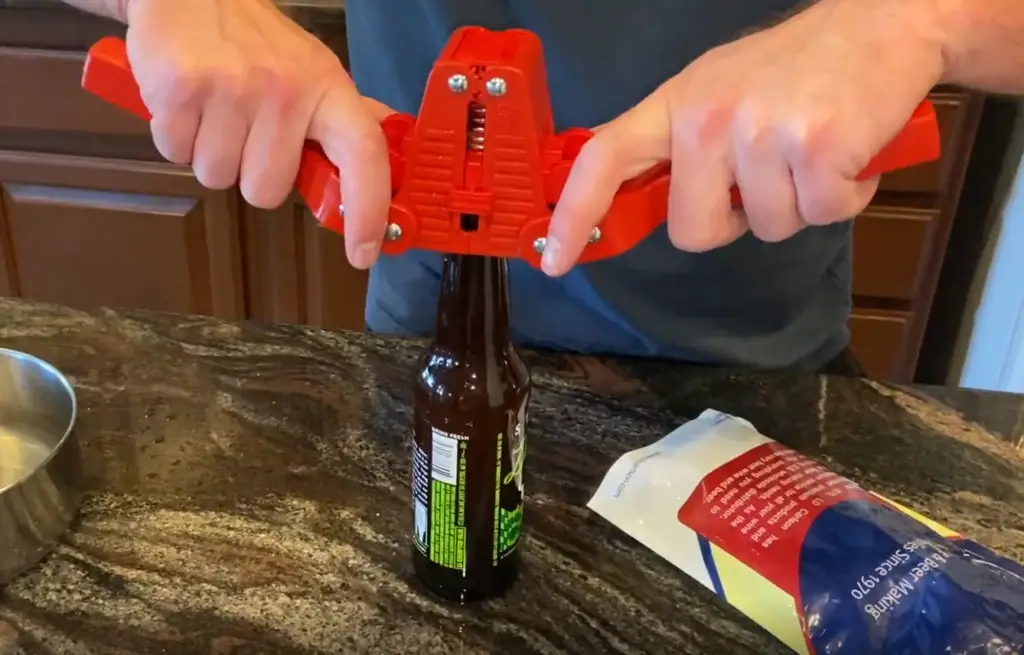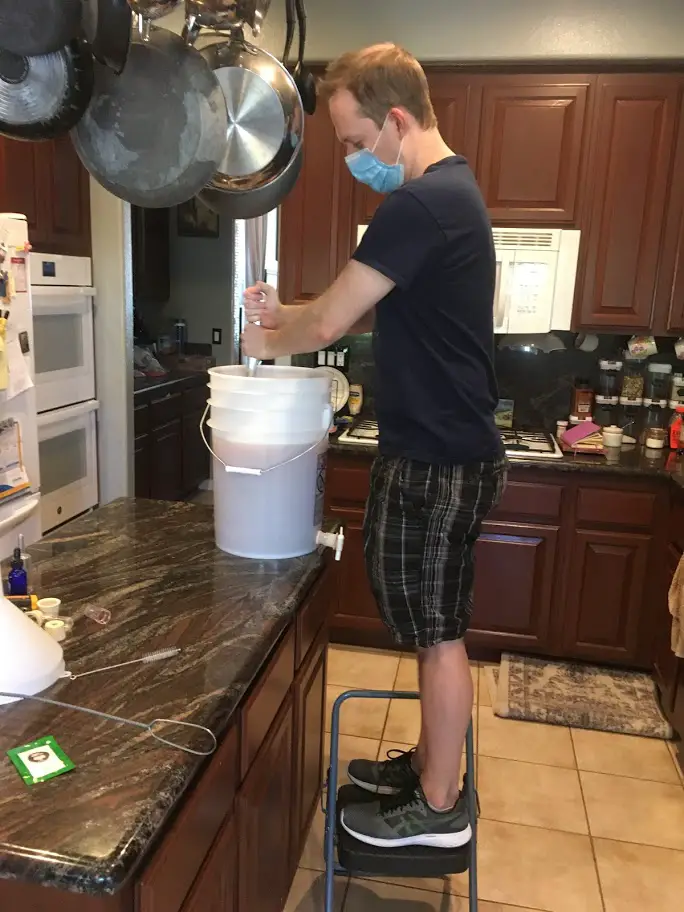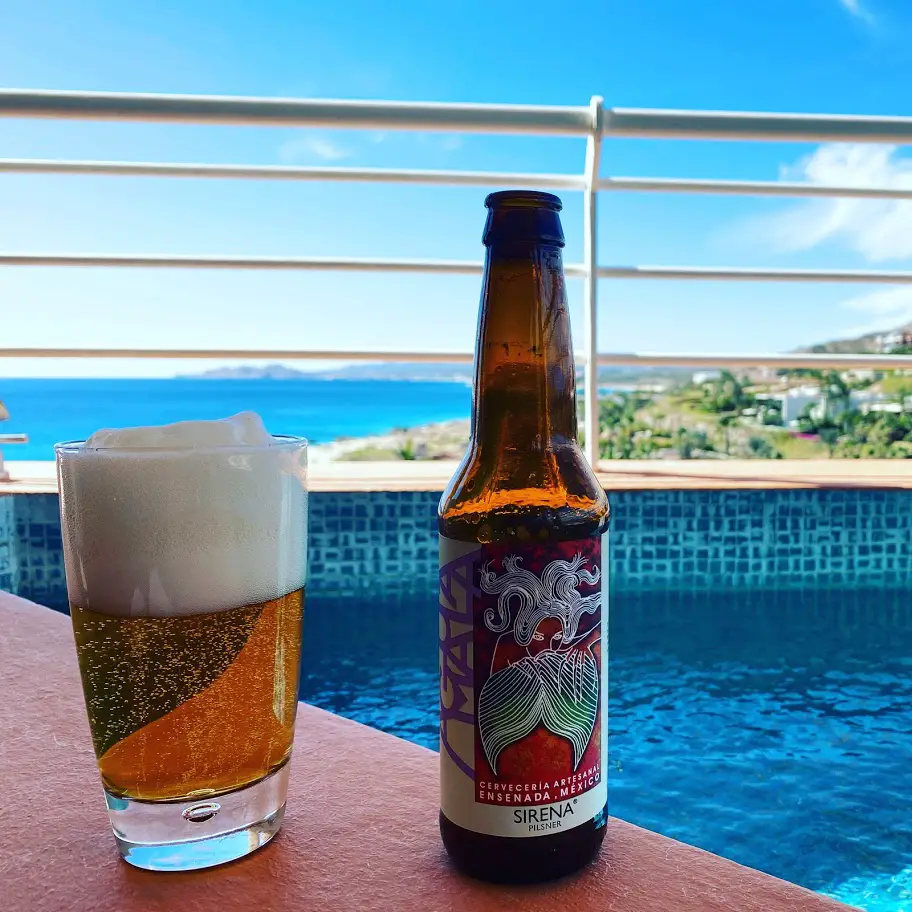
Bottling is tough. It really can be a tedious process compared to kegging. But, there are many times when bottling is necessary. Especially if you want your friends to try your beer when your unable to get together in person.
With bottling there can be a lot of questions, especially when it comes to carbonation and storage times. Especially since kegs are ready to go pretty quickly. So how long should homebrew sit in bottles to carbonate and when does it go bad in a bottle?
Bottle carbonating a homebrew takes 2 weeks. When properly stored it can remain in that bottle for a year or longer. Quantity of hops, yeast, beer gravity, grain type, and ABV percentage can all affect a carbonation and beer storage time.
There is a lot to consider when bottling your homebrewed beer. This guide should help you navigate the treacherous sea and keep you from making some of the mistakes I’ve made.
How To Carbonate Your Homebrew In Bottles
The first step in bottle carbonating your homebrewed beer is to wait for your fermentation to complete. In order to do this you will need to wait for your gravity reading to be the same over a couple day timeframe.
This will usually take about two weeks, to be on the safe side that is. It could be done before, or after that length of time. I’m usually pretty lazy and just wait 2 weeks, but as I’ll explain later, laziness can be a mistake.
In order to check your gravity you will need one of two devices.
- A Brix Refactometer for measuring specific gravity and/or brix.
- Brewers Hydrometer.
Not only are these devices essential for checking gravity and thus alcohol percentage. But, if you want to bottle you absolutely should have this to make sure your fermentation is complete. Simply measure over the course of a couple days and if it remains constant it’s time to bottle.
I’m really starting to enjoy the refractometer. I love how little waste it creates. You only need to use a drop and you get a nice reading. Its also less difficult to tell what the number is, since there is no wort foam impeding your vision.
Priming Sugar and Calculators
Once your gravity reading is stable and fermentation has completed on your beer then it will be time to measure out how much sugar you will need to add in order to infuse more CO2 into your beer.
There are many calculators you can find with a quick google search. They all work pretty well so its really up to the one you like best. Brewers Friend has a pretty good one that gives you some additional pointers.
In order to prime your beer or in other words add sugar to your beer for the yeasties to eat you will need to choose a sugar. There are many types that you can use, but what is mainly important, is that you use an easily digestible sugar for the yeast.

Some sugar types include:
- Table Sugar
- Corn Sugar
- DME
- Treacle
- Honey
These are some of the main sources that you can prime your beer with. The cheapest and most used is typically DME. Treacle and honey may be the healthiest but are more expensive and a bit harder for the yeast to metabolize.
A Video to Help You Clean and Bottle Your Beer
Some of the equipment I used in the video in order to bottle the beer:
- 6.5 gallon bottling bucket
- Bottle wand and silicone tubing.
- Red bottle capper with caps.
- Beer bottle brush.
Of course you will need beer bottles too, but I’m sure you can figure out how to get some of those.
When to Refrigerate Homebrewed Beer
Ideally you don’t need to refrigerate a bottled beer unless you are just about to drink it. At least for an ale style beer. For a lager it will need to be left in cold storage for a few months.
An ale typically ferments at room temperature and if you have added the perfect amount of sugar then you will achieve a nice equilibrium.
Since ales ferment at room temperature putting them in the fridge will cause fermentation to cease. So make sure you do not refrigerate until after two weeks or you will risk having a flat beer.
Other cases where you will want to refrigerate your beer is to stop your fermentation. So if after 1 week a bottle is carbonated to the perfect amount, then you can refrigerate all your bottles to retain that perfect carbonation profile.
This way you reduce your risk of over carbonating a beer.
Beer Styles and Carbonation
Different beer styles typically have different preferred levels of carbonation. Not only that, but they also have different levels of difficulty when trying to carbonate.

- Stouts and Porters are notoriously difficult to carbonate. This is because of their sugar content and hop quantities. They tend to be more viscous and require more time to fully carbonate.
- German Wheat Beer is enjoyed at very high carbonation levels. So more sugar is often added to make these foam up deliciously. They also have higher levels of protein that helps with head retention.
- Lager Style Beer is easier to carbonate and also is on the higher carbonation range. Make sure you review the bottle priming calculators so you don’t over carbonate.
Home Brew Answers actually has a really detailed list of carbonation ranges for different styles of beer.

Beer Bottle Carbonation Mistakes
Earlier I explained that it’s very important to make sure your gravity does not change from day to day. The reason behind this is bottle bombs. If you beer has not been fully fermented and you are adding extra sugar to a bottle you have a dangerous situation on your hands.
Recently I brewed a Hefeweizen and although I waited two weeks and measured out a perfectly normal amount of sugar, the beer produced way to much CO2 and broke a glass bottle.
I am still trying to wrap my head around it but it could have come down to a few competing variables:
- The yeast was very aggressive and didn’t follow a normal schedule.
- The proteins from the grain and yeast mixture trapped CO2 and prevented further fermentation.
- The amount of hops I added may have caused more CO2 retention
- I didn’t add enough oxygen and when bottling introducing more oxygen to the beer caused the yeast to multiply and eat more sugars.
These could have all caused the problem that I had. So always make sure you are degassing prior to bottling and measuring gravity on the days leading up to bottling day.
Bottling your Beer from a Keg
Bottling your beer from a keg is a great way to keep your brew carbonated perfectly without having to worry about the yeast sediment that collects at the bottom when you prime a bottle and create carbonation though yeast eating the sugars.
There are a number of ways to bottle from your keg:
- Directly from the tap: This can create some foam and may make it difficult to cap leaving your with an under carbonated beer.
- Counter pressure bottle filler: This is a much cleaner way to bottle and won’t introduce oxygen and waste CO2. If you are bottling from a keg it is the preferred method.
- Bottle with a tube: This is normally done for growler fills. You see this done at breweries all the time. They normally purge the vessel with CO2 and then connect the tube from the tap. It’s not really recommended for bottling in 12 oz. bottles.
There are some added costs to bottling from a keg so if your new to brewing its best to stick with the bottle priming method. But, when you are ready it may be worth it to step up to kegs and counter pressure bottle fillers.
How Long Can Homebrew Stay in a Bottle
Home brewed beer can actually stay in the bottle for as long as you want if its perfectly carbonated. Although it does tend to go bad after a year. The lower alcohol levels and hops are the culprit. Since hops skunk over time there is often an expiration date on IPA’s and NEIPA’s.
Highly hopped beers if stored in the dark will last the longest but will only reach a year at most. Beers like Belgian tripels, sours, lambics and barley wines can last far longer because of their higher alcohol content and minimal use of hops.
Just remember when storing beer bottles to leave them in a cool dark place. Good luck and make sure you keep track of when you brewed all of your beers.
